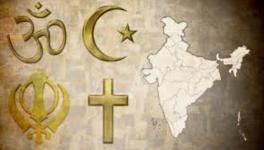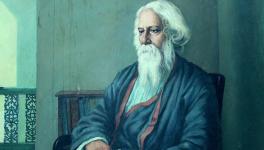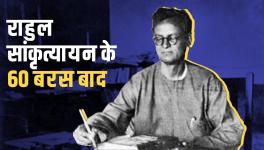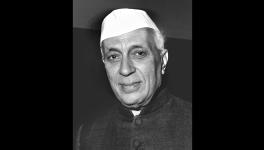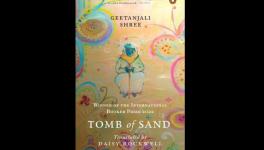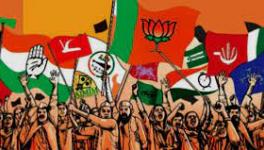Translation as Writing
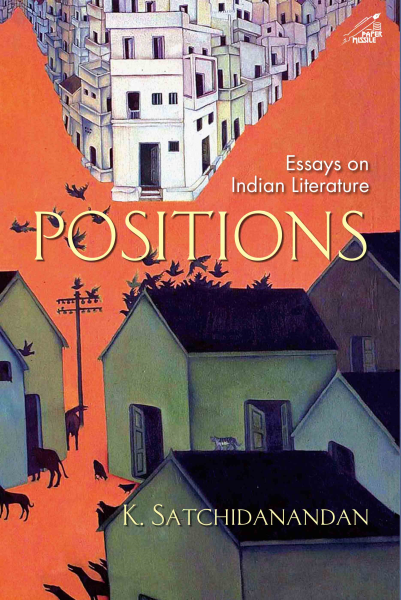
Written by K Satchidanandan, eminent poet and recent recipient of Poet Laureate award, Positions: Essays on Indian Literature is a collection of 25 essays on Indian literature written over the past 25 years. The book contains essays that look for paradigms based on Indian textual practices and reading traditions, while also drawing freely on Indian and Western critical concepts and close readings of certain texts.
Divided in two parts, the first part deals with questions on the idea of Indian literature, the poetics of Bhakti, the concept of the "modern", the location of English writing in India, the conflicting ideas of India, projected especially by the subaltern literary movements and the issues of literary criticism and translation. The second part discusses the cords of individual authors like Mirza Ghalib, Kabir, Rabindranath Tagore, among others.
The following is an excerpt from the chapter "Translation as Writing: Text, Translation, Authenticity — Towards an Indian Perspective".
Translation, especially in a multi-lingual country like India, has deep cultural implications. It is even a measure of the growth achieved by a language and also of the dominance of certain languages over others. Even the use of certain languages as filter languages for translation into other languages involves the question of power. When a work in an Indian language is translated into English, it entails the representation of a regional culture for a more powerful national/Indian regional culture; when made available outside India, it involves representing a national culture for a still more powerful international culture, which today unfortunately means Western culture. There is here an interplay of cross-cultural pride and prejudice, when one world is represented for the other in translation. The practice of translation in post-colonial contexts has given form not only to discourses of domination, but also of resistance. Translation theories so far have mostly been dominated by translations involving Western culture. It is necessary to relocate the theory and practice of translation within hitherto unexplored, Eastern, cultural contexts. Translation activity needs to be examined as policy, prioritisation, empowerment, enrichment and culture learning within post-colonial contexts, since cross-cultural relations are constituted not on an abstract transcultural universal of beauty,
but on immediate encounters with other cultural systems. Translation is also a celebration of difference and a re-inventing of cultural identities. The choice of language signifies one’s position in the social reality, and the conflict of codes functions as a representation of linguistic diversity. Translation activity constructs cultural identity by reframing the boundaries of the sayable and changing the terms of affiliation.
Also read | The Crisis of Nationalism
The question of authenticity became important to translations in India much later. Even the early translators of religious works like the Bhagavat Gita, while being true to its spirit were not always true to its words. Jnaneshwar, the Marathi Bhakti poet expounds the Gita, keeping in mind the average Marathi reader of his time. He admits humbly that it is beyond his capacity to expound this text; he compares himself to the titibha bird trying to sound the depth of the ocean with its tiny beak. At the same time, he is conscious of the gravity of his mission: ‘I have clothed the Gita in the garment of Marathi but if there is no one who can recite it, there will be nothing missing. If Gita is to be recited, it won’t be of less value if this Marathi version is used.’
Later he adds: ‘The Gita is like a trusting mother from whom, I, her child, have wandered away.’Thus there is fear of misrecognition, yet confidence that the translator has accomplished his task for public good. A later commentator, Dr S. Radhakrishnan, however, has reservations about translating a text like Gita. He says in his preface to his translation.A translation to serve its purpose must be as clear as its substance will permit. It must be readable without being shallow, modern without being unsympathetic. But no translation of the Gita can bring out the dignity and grace of the original. Its melody and magic of phrases are difficult to recapture in another medium. The translator’s anxiety is to render the thought, but he cannot convey fully the spirit. He cannot evoke in the reader the mood in which the thought was born and induce in him the ecstasy of the seer and the vision it holds. Quoting this, R.C. Prasad, a translator of Tulsidas’s Ramcharit Manas, says the words apply equally well to the translation of this great epic each of whose words evokes very specific native associations. The intertextuality of Manas renders the task more complicated as Tulsidas takes passages from Jayadeva’s Prasannaraghava, Valmiki’s Ramayana, the Adhyatma Ramayana, the Hanuman-nataka and Kalidasa’s Meghadoota, Raghuvamsa, Kumarasambhava, etc., and polishes, sweetens and elevates them to produce a new rasatmakata. Agha Shahid Ali finds a similar difficulty in translating the eminent Urdu poet Faiz Ahmed Faiz, for he used classical forms like quasida, ghazal, masnavi, qita and transformed them before his readers. Languages however do not share products but they have corresponding processes. A translation as Dilip Chitre observes, seeks to transcreate the process by which the source text was arrived at by reversing from a surface structure the journey to the inner course of events. The surface structure is not where we stop looking; it is where we intuitively enter the whole underlying process; it is where we begin to see. Translations describe and point to the source by making a model of it. Translation uses the imagination to treat one language as though it were an analogy for another. Referring to his own translation of the Marathi devotional poet, Tukaram, Dilip Chitre observes how in translating Tukaram we are not only translating poetry, but recreating a dramatic ritual of ‘possessed’ language. The text here is a total cultural performance that embodies a specific tradition and an individual notion of poetry, the poet and his audience. The English translator of Tukaram has to make his work appear here and now and yet suggest also that it is really out there. Tukaram has to remain a 17th-century, Marathi Bhakti poet and not a contemporary Englishman talking of mystical illumination in India.
Also read | The Idea of India: The Case for Plurality
All these examples show that the concern of the Indian translator has never been literal accuracy: that was an anxiety that came with the translation of the Bible and the Quran, and grew as a result of the impact of Western understanding. However, after several centuries the West has also begun to realise that ‘translation is forever impossible and forever necessary.’ The breakdown of traditional theories of linguistics based on the axiomatic relationship between the signifier and the signified, the consequent discovery of discourse as an endless deferral of reality, the loss of the unity of the subject and the redefinition of translation as an intense and intimate mode of reading have together challenged the old concept of the impossibility of translation. Texts are no more believed to be self-identical, having a theological meaning, but as multi-dimensional spaces where a variety of writings blend and clash. There is nothing like an ‘authentic’ original text and a unique authorial voice. If all works are polyphonic and polysemic, translation, like reading, is a fresh composition, a construction. There is no single authentic translation either; each translation can only be one translation, and not the translation since there is no pre-existent meaning but meaning depends upon an interventionist reader creating his/her own text. The translator has first to become the intimate reader in order to surrender to the text and respond to its special call. ‘The Translator’ to quote Gayatri Chakravorty Spivak, ‘earns permission to transgress from the trace of the other—before memory—in the closest spaces of the self.’ Translating is thus a simple miming of the responsibility to the trace of the other in the self.
Also read | Poetry Against Violence: A Prayer For Peace
All acts of translation are an attempt to mediate between cultures, texts and nationalities. We are however no longer certain about the meanings of these terms; a consensual approach to the definition of notions like Indian culture and sensibility are no longer available to us today. Most of us now understand the interface between translations and colonisation and the complicity of colonial administration, historiography, ethnology and missionary activities in the politics of containment. Literature uses words with which the people of a language community can associate the experience of their composite cultural past. The word is essentially a cultural memory in which the historical experience of the society is embedded. The society remembers and participates in this experience when this is put into a context. The translator has to recreate this participatory experience of the source language culture by recontextualising it in the target language culture so that the target language reader can in some sense participate in an alien cultural experience. Translation as cultural representation is a complex political act, which must foreground a series of significant questions: Who does the translation? Whose experience is being translated? Who is the author of the text? Who forms the target audience? What is the historical position of the respective figures involved in this act? And their affiliation in terms of class, gender and caste? The context, what Neitzsche calls ‘effective history’, becomes integral and indispensable to the act of translation. But this leads us to the questions related to the politics of translations, the kind of questions discussed by Tejaswini Niranjana and Gouri Viswanathan in the context of colonialism and English education in India. Today, however, India is independent enough to have her own agenda for translation, free from the Orientalist assumptions that underlay the colonial project. There is greater need today than ever before to bring our languages and literatures closer through translations within the country, while also translating from and into foreign languages: these are only two steps in the same direction: uniting the nation without standardising its cultures and bulldozing its diversity, and building bridges between our cultures and other cultures in the context of the growing human concerns that cut across national and linguistic borders, which is the positive aspect of intellectual globalisation.
K. Satchidanandan is a widely translated Malayalam poet and a bilingual writer, translator and editor. For more on the author and his work see satchidanandan.com.
Get the latest reports & analysis with people's perspective on Protests, movements & deep analytical videos, discussions of the current affairs in your Telegram app. Subscribe to NewsClick's Telegram channel & get Real-Time updates on stories, as they get published on our website.









